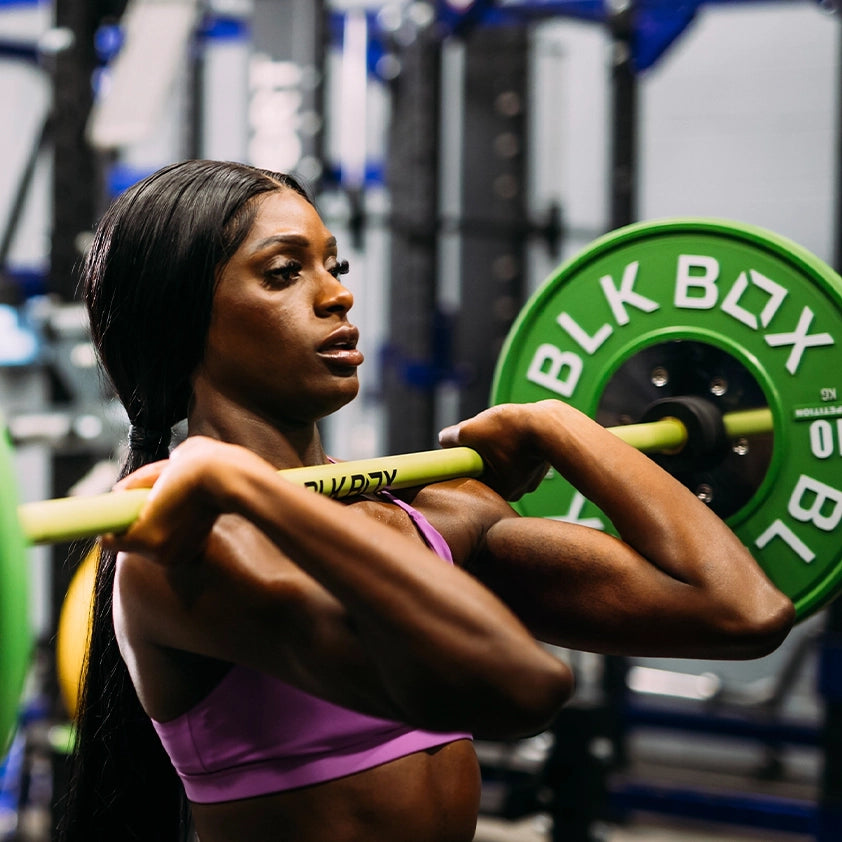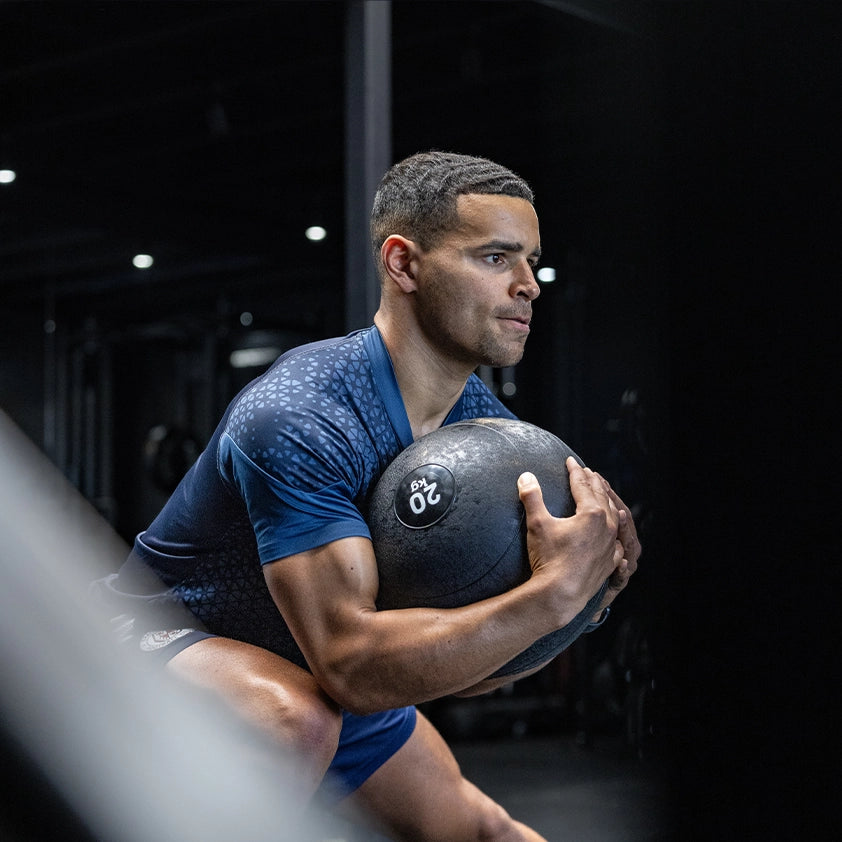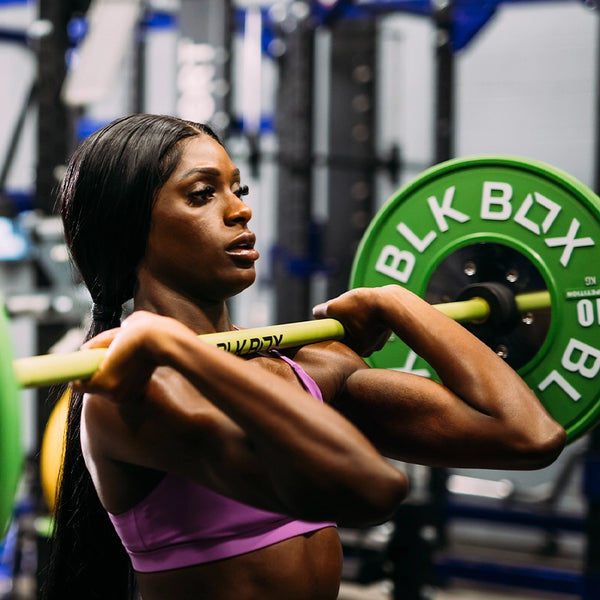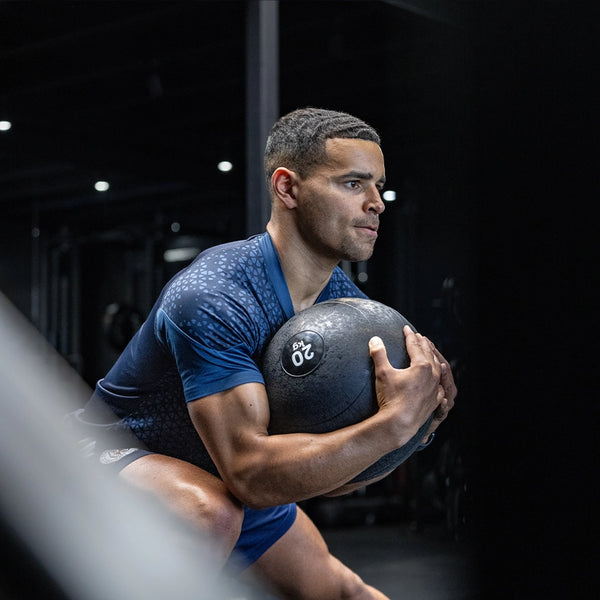I'm Athletic, I'm Pregnant - 5 Things I Wish I Knew When I Got Pregnant
Written by Kat Suchet - Owner of Hatch Athletic
When my mum's generation fell pregnant the female athlete was a different species. An athletic female was quite a rare commodity, someone who had perhaps fostered a unique skill or talent from an early age, or perhaps one of the few who took a sport to a professional level. My mum's fitter friends and acquaintances might've done yoga or keep-fit class or gone for a jog. The rest, well, it simply wasn't the thing for women to be very fit and sporty 30, 40, 50 years ago.
Now, in 2020, we're in an era where women are able to enjoy regular high-intensity exercise more than ever before. We know a dumbbell from a kettlebell and we all know some women who're running a 5km, a 10km, doing a triathlon, or a Tough Mudder. It's very normal for the 'normal' amongst us to be regulars at barre, pilates or painful HIIT classes. Many modern females can describe what CrossFit is all about, and some enjoy this kind of intensity regularly. The fact of the matter is - the modern female is more athletic, fitter and stronger than ever. And all the while we're holding down jobs and, yep, you guessed it... having babies!
The modern female is fitter but it's also our minds that are evolving; we are more mentally competitive and more career-driven. We're used to discomfort and we're used to juggling - to switching areas of our brain into auto-pilot whilst we carry out multiple tasks. The pace and demands of modern life can often mean some areas of our lives can be a little neglected more than others. And occasionally, just occasionally, we drop the ball. We're only human after all. In this information-loaded society I get it, it can be overwhelming. And also hard to apply the advice out there to your body. After all, you're fitter and stronger than most of the advice out there. 'Moderate exercise' and 'listening to your body' aren't really terms you've been comfortable with. It's time you ladies - fit, pregnant, and athletically capable ladies - had some solid, straight-talking advice on how to look after your body throughout pregnancy. That time is now!
1. Expect Less
Are you anything like me and a perfectionist? Bossing it in the gym and now can't straddle the exercise bike for want of gagging or keeling over in a corner? If the advice said I could - from a safety perspective - work out as I was doing (which is true advice by the way), then I told myself that's bloody-well what I should be doing. By not working out as 'normal' I was somehow not living up to the generic advisors. Do NOT beat yourself up as I did. Just getting there is achievement enough - let it energise you, or let it help you zone out, or feel more normal. Now is not the time to be making gains. Let me say this now - in the first trimester - it's quite unlikely that you'll be unable to perform physically in the way you are used to, despite the plethora of advice telling you that you can carry on with what you've been doing. This is pregnancy safety advice but what it neglects is the mental battle a fit female will go through when learning she simply can't perform at the intensity that she is used to. Frankly, she's knackered and can't choose if she'd prefer to throw up or smash a bag of salty chips. What you can, or are allowed to do safely, and what you should give yourself permission to do are two different things. It's absolutely fine and totally normal for even the fittest of females to have days, weeks or even months off during their pregnancy journey. You're in this for the long-haul I'm afraid mama, it's time to shift down a gear and be kind to yourself. Adjust your own expectations of yourself. Expect that you will achieve less in your first trimester.
2. Park the Ego
Hmm? What? No ego here. Said no one ever. I'm afraid if you're sporty then the two kind of come hand in hand to a greater or lesser extent. It means you're competitive and you get a kick out of doing better each time than the time before. Even if that's competitive with yourself and not with others. It's there, that streak of glee when you smash a PB in the pool, under the bar, or on the track. If you're not managing to work out at all, don't beat yourself up and fret over all the lost fitness - you are in SUCH good shape for pregnancy, and that's your job right now. If you are one of the lucky ones who feels energetic and is working out like normal in your first trimester - that's great but park the ego. It's good to practice now as the second and third trimester will come and you'll need to make friends with scaling. Sure, there are women out there who will clean and jerk their bodyweight at 30 weeks pregnant and who will compete up until their first contraction. But my feeling is, unless Nike has you on a retainer it's time to put the competing on hold for now. The work you put in by being humble in your approach to pregnancy exercise will hold you in good stead for life.
3. There are no 'banned' exercises in the first trimester...but...
It's true! Unless you're a ski-jumper, a cliff-diver, or a base-jumper. But there are things to be mindful of. I groan when people say 'listen to your body' because most of you fit women are used to ignoring pain during exercise. So let's rephrase it to 'don't be tempted to push beyond discomfort.' Be that heart rate, overheating (a common problem!), an achy joint or a twingy muscle. Be mindful when you're working out and start connecting with your body in a new way. Feels uncomfortable in your body or your mind? Reign it in a little. We only really have safety guidelines with regards to exertion because a pregnant woman's heart rate is naturally higher than if she weren't pregnant - it's not really to do with depriving your bub of vital O2. Bub will get her Os way before you.
A pregnant woman's basal temperature is also a little warmer. With regards to new aches and pains, your body now has relaxin swimming around your circulation, a hormone that relaxes the ligaments around your joints. This makes you more susceptible to sprains, strains and tweaks than you used to be. Remember points 1 and 2 however. Although there are no 'banned' exercises from a safety perspective, this doesn't mean to be meeting the guidelines you must be working out exactly as before. This is your journey and you must customise it for you and your energy levels. When you enter your second trimester there will be some modifications to some movements needed.
4. Invest in a wearable device that has a decent heart rate monitor
Yep - the good old 1960's advice of monitoring one's heart rate in pregnancy is golden in my books. But not for their reasons. Gone are the recommendations to stick under the 140 beats per minute advice of the bygone days (which doesn't take into account pre-pregnancy fitness, age or weight), so you don't need the monitor for that. Discomfort has become quite the norm in modern exercise and oftentimes pushing through discomfort is seen as an achievement. Pregnant modern athletic women need the monitor to objectively tell them how hard they're pushing. And for those of you questioning the modern-day generic advice to instead use the Talk Test or Borg Rate of Perceived Exertion - see above.
When you're pregnant your natural resting heart rate becomes higher. Fit pregnant women run the risk of perceiving their exertion as less than it is in reality. So get shopping and keep under 85-90% max heart rate. Garmin, MyZone, Polar, and now even FitBit and Apple Watch have all been clinically validated as accurate HR monitors. Subjectivity isn't good enough for the pregnant modern athletic female population - we need technology to help us know how hard we're pushing.
5. Round Ligament Pain - 'Afraid So
For those of you who are fairly athletic in physique, this is more likely to affect you. This can begin as early as the first trimester and can last well into the second trimester. It really depends when you do the majority of your initial growth. If you're lucky you may avoid these pains or they'll at least be short-lived, but if you're like many of my athletic friends who've had baby, the pain can be a bit of a drag. Just so you know what it feels like, it's a sharp pain a bit like a pulled muscle, around your abs or lower into your pelvic region. It can happen any time, but more common on sudden movements, twists, changes of position or cough/sneeze. I'm afraid the basic description is true: your abs are making way for your growing bub.
The best advice I had from a doctor who was also a competitive CrossFit athlete: switch them off (re: your abs). Try to relax your tummy muscles as much as possible. You may be naturally very active in your abdominals and pelvic floor, possibly even over-active and this resistance are likely to exacerbate round ligament pain. It's time to connect with your breath and learn some simple relaxation strategies you can do throughout the day to make the belly go all squishy and relaxed. Helped me so much. As did regular swimming.
About The Author
Kat is the director of Hatch Athletic - a new and exciting postpartum training program for athletic/strong mamas. Kat is a physiotherapist, CrossFit athlete and coach and most importantly a mama. She has designed this medically-approved 12 week postpartum program specifically for fit new mums who have desires to return to their sport with bulletproof pelvic health. The program is ideally suited for the healing postpartum body, the athletic body and the mind. Check it out at www.hatchathletic.com or pop Kat an email kat@hatchathletic.com to find out more. What’s more - Hatch is running a 25% discount for the month of May, so if you’ve recently Hatched and you’re ready to start your rehab, get involved!
















